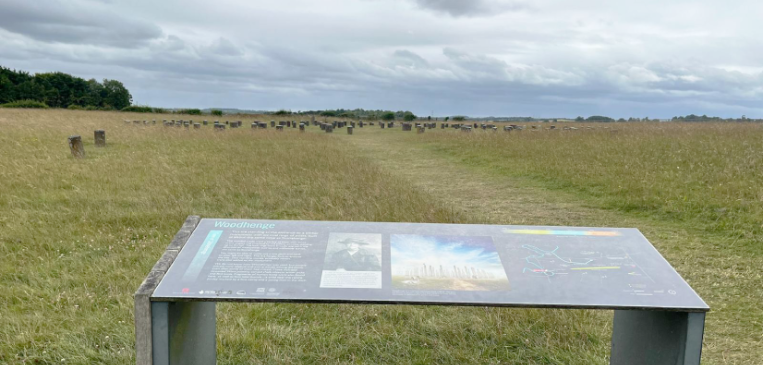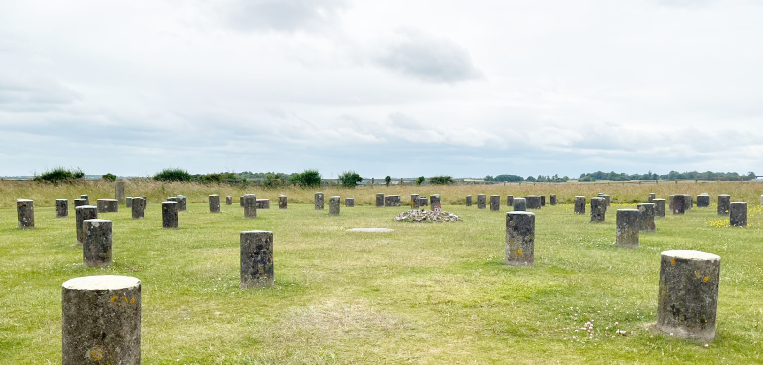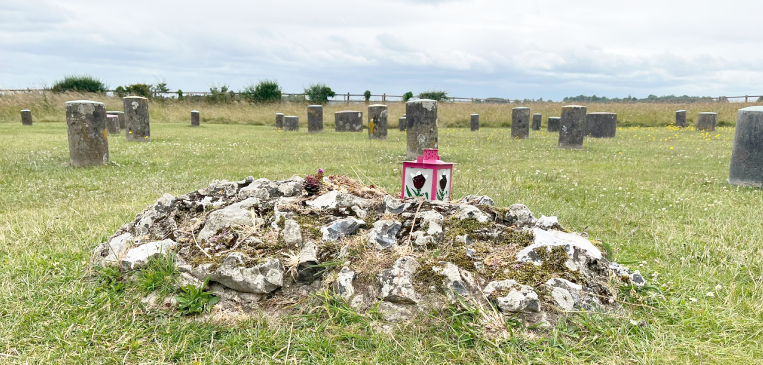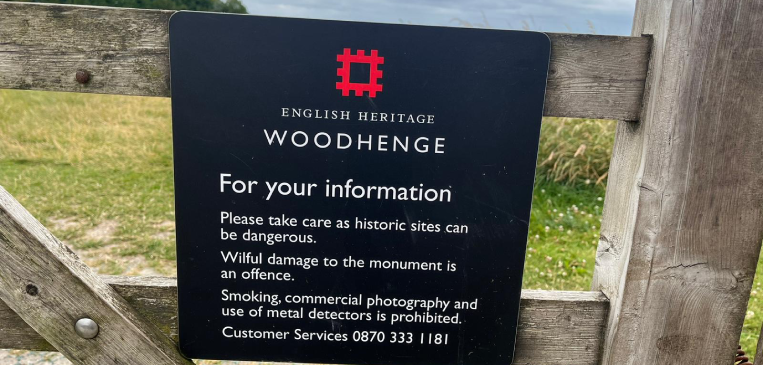Visit Woodhenge: The Prehistoric Monument Near Stonehenge
Woodhenge is a prehistoric monument located just outside Amesbury in Wiltshire, only a short distance from Stonehenge. Although far less famous than its stone-built neighbour, Woodhenge is one of the most important Neolithic sites in Britain and offers valuable insight into ceremonial life over 4,000 years ago.
Today, Woodhenge is free to visit and can be explored year-round, making it a popular stop for visitors interested in ancient history, archaeology, and lesser-known prehistoric landmarks near Stonehenge.
What Is Woodhenge?
Woodhenge is a circular Neolithic monument made up of six concentric rings of timber posts. Unlike Stonehenge, which uses massive standing stones, Woodhenge was originally constructed entirely from wood.
Archaeological evidence suggests the site was used for ritual or ceremonial purposes, possibly connected to seasonal events, funerary practices, or social gatherings. The wooden posts themselves have long since decayed, but their original positions are marked today by coloured concrete markers that show the layout and scale of the monument.
Where is Woodhenge Located, and How Far is it from Stonehenge?
Woodhenge is in Wiltshire, England, just over 2 miles (3.2 km) northeast of the renowned Stonehenge. It’s near Amesbury and part of the UNESCO-listed Stonehenge and Avebury World Heritage Site. The closeness of these two ancient monuments suggests they might be connected, hinting at shared cultural or ceremonial importance. While Stonehenge is famous for its massive stone structures, Woodhenge’s timber posts offer a different view of how prehistoric communities expressed their beliefs and organized their sacred spaces.
Visitors often combine Woodhenge with:
- Stonehenge
- Durrington Walls
- The River Avon
- The Stonehenge Cursus
History of Woodhenge
Historians think this Neolithic structure was built around 2300 BCE, during the same era as other significant constructions in the area. Its exact purpose is still debated, but it was likely a place of religious or social importance. Unlike the stone structures of Stonehenge, Woodhenge originally had wooden posts arranged in a circle, sparking curiosity about its original look and function.
The site was rediscovered in the 1920s when aerial photos showed dark patches in the soil, indicating buried history. Excavations confirmed these were the remains of timber posts. Today, concrete markers stand where the wooden posts once were, helping visitors visualize the original layout and scale.

The Layout and Experience
Upon arrival, visitors first notice the symmetrical design, consisting of six concentric rings. The diameter of the outer ring is impressive, stretching across a vast area, suggesting the site could have accommodated large gatherings. Walking among the markers, one can almost sense the echoes of the past, imagining the ceremonies that might have taken place on this very ground.
At the centre of the rings lies a burial site, thought to be that of a child. This discovery has led to speculation that the site may have held spiritual significance, possibly linked to rites of passage, ancestral worship, or even sacrificial offerings. Though no one can say for certain, the presence of a grave adds a deeply human element to the site, reminding visitors that these ancient structures were once an integral part of people’s lives.
Theories and Connections for Woodhenge
Much like the nearby stone circle, this timber construction aligns with celestial events, particularly the sun’s movements throughout the year. Some researchers believe it was used to mark the changing seasons, which would have been crucial for early farming societies. Others suggest it served as a gathering place for community events or a sacred space dedicated to spiritual practices.
What makes this place even more fascinating is its close connection to other Neolithic sites in the area. It forms part of a wider network of prehistoric monuments, including burial mounds and long barrows, hinting at a sophisticated and interconnected culture. Visitors who explore the region more extensively will walk through a landscape that human hands have shaped for thousands of years.
A Peaceful Visit
Unlike more famous historical attractions, this site remains relatively quiet, allowing visitors to appreciate its atmosphere without crowds. There are no grand visitor centres or ticket booths—just an open field with a simple pathway leading to the heart of the monument. This makes it an excellent choice for those who prefer tranquil exploration over bustling tourist sites.
To enhance the experience, consider visiting during sunrise or sunset when the light casts long shadows over the markers, creating an ethereal effect. The solitude and open skies make it a perfect place for quiet reflection, photography, or simply soaking in the ancient surroundings.
Of course if you want to visit Stonehenge at its peak alignment (and with a lot of other people) with the sun at the solstices then you can learn more about how the solstice at Stonehenge was celebrated and interpreted through the ages.
Getting There and What to Expect
The site is located just a short drive from the famous stone circle, making it easy to include in a day of exploring Wiltshire’s rich history. There is no entry fee, and parking is available nearby, making it an accessible destination for visitors of all ages.
Since the location is entirely outdoors, it’s a good idea to check the weather before setting out. Sturdy footwear is recommended, especially after rain, as the ground can become muddy. While the site itself does not have facilities, nearby towns offer plenty of options for refreshments and rest stops.
Why Visit?
This site provides a rare opportunity to step into the past and ponder the lives of those who lived here thousands of years ago. While its origins may remain mysterious, its presence speaks to the ingenuity and beliefs of early societies. Whether you’re a history enthusiast, a lover of quiet landscapes, or simply curious about Britain’s ancient heritage, this hidden gem offers a unique and enriching experience.
A visit here is a must for those seeking to understand the broader picture of prehistoric Britain. It may not have the grandeur of its stone-built cousin, but its significance is just as profound. By standing among its reconstructed posts, visitors can gain a deeper appreciation for the cultures that shaped the land long before written history began.
A visit to this ancient circle is more than just a historical outing; it is a chance to connect with the distant past, walk in our ancestors’ footsteps, and imagine a world where wood, rather than stone, formed the centre of spiritual and communal life.

Other Useful Information For Visiting Woodhenge
Best Time to Visit: Sunrise or sunset for a peaceful experience
Address: Woodhenge, Amesbury, Wiltshire, England
Postcode: SP4 7AR
Entry Fee: Free
Parking: Available nearby
Frequently Asked Questions
Yes. Woodhenge is completely free and does not require a ticket.
Woodhenge is around 2 miles (3 km) from Stonehenge and can be visited on the same day.
No. The original wooden posts have decayed, but their positions are marked with coloured concrete posts showing the original layout.
Yes, especially if you are interested in prehistoric Britain or want to explore beyond Stonehenge. It provides valuable historical context with far fewer visitors.
Yes, it is possible to walk between the sites, although there is no direct signed path for the entire route. Proper planning and navigation are recommended.
Interested in checking out some of our…
STONEHENGE TOURS BY COACH
All of our full-day and half-day London to Stonehenge Tours involve central London pick up and drop off at the end of the tour. Visitors will travel in a luxury air-conditioned coach with a knowledgeable guide to assist them on their tour of the best attractions in the UK. Often it’s an early start, so you want to travel comfortably; many coaches include free wifi to keep in touch during the journeys, look up what’s to come or share your experiences online. You don’t need to worry about parking far away at Stonehenge either when travelling on one of our luxury coaches as the coach parks near the main car part and just a short walk to the visitor centre and main entrance.





